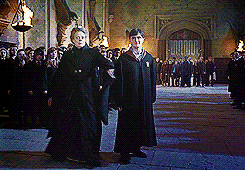Underwriting: Ways To Boost Your Word Count
Underwriting: ways to boost your word count
I wrote a fic recently and the word count for the first draft came to about 40,000 words – roughly the length of a novella or ficlet. And that’s fine because I wasn’t striving for a novel or a 100K slow-burn coffee shop AU.
But coming to edit my first draft I realised something about myself. I am an underwriter. My fic could actually be at least 10k (maybe 20k) longer. Of course it’s not all about word count, it’s about the story, but in this case a smaller word count isn’t because I’m a fantastically efficient storyteller it’s because I’ve missed out a lot of stuff. Like, Important Stuff.
So as I set out to add muscle to the skin and bones I’ve already created in draft one I thought I’d share five tips for my fellow underwriters to help you flesh out your writing too.
1) Make sure to describe the place and space in which the action happens.
There are quite a few places in my first draft where there’s no indication as to where things are taking place– or there is, but it’s the bare minimum and not really enough to build up a clear picture. This probably because as the writer I know exactly what the place looks like so I make the assumption that a bare minimum description will mean the reader knows too.
Now I’m not saying go into masses of detail about what your settings look like. In some cases it’s not useful to describe setting in a lot of detail (e.g. during really fast paced action sequences) but doing a verbal sketch of the space is essential for putting your characters in context and reader understanding.
I really is a fine balance (which is why beta readers are your friend!) But definitely go back to your setting descriptions if you’re an underwriter, they might need some work.
2) Make sure to describe your character’s appearance.
Similar to the above point – you know what your characters look like, but unless you describe them, the reader won’t.
It’s fair to say that descriptions are open to reader interpretations, but that doesn’t mean you shouldn’t describe them in a healthy amount of detail. So you might try to nail down some of the interesting quirks about your characters to help the reader build a picture – not only will it help the readers understanding, it’ll boost your word count too!
Note: This one functions a little differently in a fic because the readers are probably familiar with how the character looks, but there is nothing wrong with adding your interpretation (or even reminding them, especially if the characters are from a book.)
3) Include character reactions outside of what they say out loud.
Real life conversations aren’t just about the stuff that comes out of our mouths. So much of human interaction is about body language – so include it in your writing! Saying that the character covers their mouth with their hand when they talk suggests shyness. While another character crossing their arms shows they’re defensive -perhaps because they’re feeling threatened. In real life we don’t always say what we mean – but a lot of the time our actions give away what we’re really thinking. By including these actions around dialogue writers can influence how we as readers view characters and how we interpret interactions between characters. And it can boost your word count too.
The big stuff:
4) Check your pacing.
When you write it feels like your scene is taking place over hours, days, weeks because when you’re writing it takes time. Reading, on the other hand, is much quicker. A seasoned reader can fly through a 100 page novel in a few hours – a seasoned writer can spend hours writing a 100 words.
When you read back your writing, make sure to check your pacing. You might just find that the Impossible Task you set for your characters at the start of the story is suddenly resolved within the next fifty pages. To boost your word count you might want to start by adding more obstacles between the character and their goal.
For example; your character has to find an object such as a precious jewel. Sounds relatively easy, right? But what if the jewel is lost in the mines of an ancient people, amongst thousands of other treasures that look very similar? What if no one has found this jewel because it’s guarded by a fire breathing dragon? What if the ancient mines and dragon are located in a mountain which is miles and miles away across dangerous lands? What if your characters need to enlist the help of someone with a very specific skill set?
You take one simple objective (finding the jewel) and you put into play a series of obstacles that must be overcome in order to complete the objective. Your underwriting tendencies, like mine, might just mean that there aren’t enough metaphorical (or real) dragons in your story!
5) Sub-plots.
A sub-plot is a smaller scale plot - often involving the supporting characters - which runs secondary to the main plot. It can be directly linked to the main plot, i.e. the info provided in the subplot directly influences events in the main plot. Or it can simply be linked through place, time or themes of the overall story (e.g. Hermione’s elf rights campaign ‘S.P.E.W’ in Harry Potter and the OoTP is linked to the overall theme of oppression.)
Sub-plots are great because they can serve as some respite from a traumatic main plot; your character is fighting a war (main plot) but also fighting and failing (in hilarious ways) to win the affection of their love interest (sub-plot).
Plus, sub-plots can also help with characterisation, can cause your main character to have the moment of realisation which allows them to overcome the obstacles they face in the main plot and is generally a better reflection of real life! Sub-plots often centre on side-kicks and other characters – people who might not be as devoted to the end goal as the protagonist is. In fact, well written side characters seemingly live their own lives with their own goals. You might choose to showcase this in your sub-plot by letting the conflict of interest cause more problems for the protagonist to overcome.
Either way you could find your word count sky rockets as soon as you add in a few clever sub-plots.
I hope this helped!
Got any questions? Send me an ask
More Posts from Queenofbumblebees and Others
They’re scared of Snape, but know what McGonagall can do to them :)

I love it how when Snape draws out his wand there are audible gasps but when Mcgonagall draws her wand there people are screaming out of the way.
due to not wanting to, i will not. thanks.

OMFG.
Six of Crows characters as Brooklyn-99 quotes
Matthias:

Nina:

Inej:

Kaz:

Jesper:

Wylan:

Honorable Mention:

bumbled be thy bees
*says ‘I’m so fucking sick of this pandemic shit’ in a distinctly vaccinated, pro mask, pro lockdown, pro taking all the necessary safety measures way*
lou, pushing through a crowd: out of my way, filthy peasants!
reid, following close behind: she means no offense! i’m sure you all shower regularly!
“Regret was the darkest nightmare of all.”
— House of Salt and Sorrows by Erin A. Craigy
fake dating to lovers is nice but married for non-romantic reasons to lovers is next fucking level
-
 nicenice7 reblogged this · 3 months ago
nicenice7 reblogged this · 3 months ago -
 nicenice7 liked this · 3 months ago
nicenice7 liked this · 3 months ago -
 allcomingback liked this · 5 months ago
allcomingback liked this · 5 months ago -
 transparententhusiastmentality liked this · 5 months ago
transparententhusiastmentality liked this · 5 months ago -
 arien-elensar liked this · 6 months ago
arien-elensar liked this · 6 months ago -
 yuugisbarber reblogged this · 6 months ago
yuugisbarber reblogged this · 6 months ago -
 yuugisbarber liked this · 8 months ago
yuugisbarber liked this · 8 months ago -
 newdawnhorizon reblogged this · 1 year ago
newdawnhorizon reblogged this · 1 year ago -
 heckcareoxytwit liked this · 1 year ago
heckcareoxytwit liked this · 1 year ago -
 alinanvjsmom-blog reblogged this · 1 year ago
alinanvjsmom-blog reblogged this · 1 year ago -
 alinanvjsmom-blog liked this · 1 year ago
alinanvjsmom-blog liked this · 1 year ago -
 accol-fics reblogged this · 1 year ago
accol-fics reblogged this · 1 year ago -
 crystallineuniverse reblogged this · 1 year ago
crystallineuniverse reblogged this · 1 year ago -
 berrieneedswords reblogged this · 1 year ago
berrieneedswords reblogged this · 1 year ago -
 ofsunsh1ne liked this · 1 year ago
ofsunsh1ne liked this · 1 year ago -
 heckcareoxytwit reblogged this · 1 year ago
heckcareoxytwit reblogged this · 1 year ago -
 heckcareoxytwit reblogged this · 1 year ago
heckcareoxytwit reblogged this · 1 year ago -
 rangerbeads reblogged this · 1 year ago
rangerbeads reblogged this · 1 year ago -
 selfloathingandpride reblogged this · 1 year ago
selfloathingandpride reblogged this · 1 year ago -
 laughinguntilmysidehurts reblogged this · 1 year ago
laughinguntilmysidehurts reblogged this · 1 year ago -
 thrashpandas-lost-trashcan reblogged this · 1 year ago
thrashpandas-lost-trashcan reblogged this · 1 year ago -
 krys-reblogs reblogged this · 1 year ago
krys-reblogs reblogged this · 1 year ago -
 moon-grub liked this · 1 year ago
moon-grub liked this · 1 year ago -
 topaz-carbuncle liked this · 1 year ago
topaz-carbuncle liked this · 1 year ago -
 happyorogeny reblogged this · 1 year ago
happyorogeny reblogged this · 1 year ago -
 raineybabyabc liked this · 1 year ago
raineybabyabc liked this · 1 year ago -
 wormiesquirmy liked this · 1 year ago
wormiesquirmy liked this · 1 year ago -
 umhowdoesthiswork liked this · 1 year ago
umhowdoesthiswork liked this · 1 year ago -
 lmk-monkeefan liked this · 1 year ago
lmk-monkeefan liked this · 1 year ago -
 aceofwands reblogged this · 1 year ago
aceofwands reblogged this · 1 year ago -
 aceofwands liked this · 1 year ago
aceofwands liked this · 1 year ago -
 legally-immortal reblogged this · 1 year ago
legally-immortal reblogged this · 1 year ago -
 legally-immortal liked this · 1 year ago
legally-immortal liked this · 1 year ago -
 king-nyx liked this · 1 year ago
king-nyx liked this · 1 year ago -
 yuanfeii reblogged this · 1 year ago
yuanfeii reblogged this · 1 year ago -
 kirkwallsbane reblogged this · 1 year ago
kirkwallsbane reblogged this · 1 year ago -
 justexistinguntilgetoldoneback reblogged this · 1 year ago
justexistinguntilgetoldoneback reblogged this · 1 year ago -
 thebazilly liked this · 1 year ago
thebazilly liked this · 1 year ago -
 avocado-frog liked this · 1 year ago
avocado-frog liked this · 1 year ago -
 selmassmokinglizard reblogged this · 1 year ago
selmassmokinglizard reblogged this · 1 year ago -
 selmassmokinglizard liked this · 1 year ago
selmassmokinglizard liked this · 1 year ago -
 crystallineuniverse liked this · 1 year ago
crystallineuniverse liked this · 1 year ago -
 zazzzalil liked this · 1 year ago
zazzzalil liked this · 1 year ago
